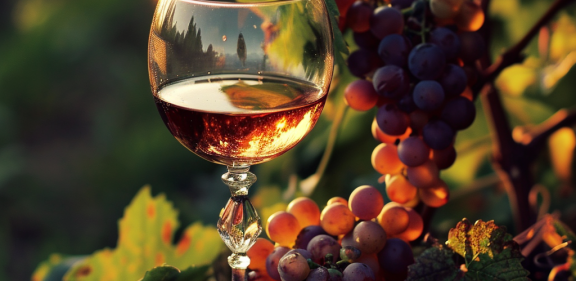Discover the secret of orange wine
If you are a wine lover, you must have come across a wine of an unusual color somewhere, which was neither white, nor red, nor pink, but rather had orange shades. Accordingly, these wines are also called orange. It is sometimes referred to as the fourth wine color alongside red, white and rosé. These wines are becoming more and more popular - what is their secret and why do they have such a color?
White or red? Both that and that

Orange wine is actually white wine, or wine from white varieties, but produced in the same way as red wine. This means that the skins are not separated from the wine during production. They remain in contact with the pressed juice for several weeks or even months.
The grapes that are used to make white wine are therefore fermented together with the skins, which results in more tannins and dyes being obtained from them. Thanks to them, the resulting wine differs from white and red wines and not only from a visual point of view. Aging on the skins gives these wines more red wine characteristics, such as fuller body and tannins, while retaining the acidity of white wine.
This wine has a dark yellow to orange color and is usually slightly cloudy. It is sometimes referred to as the fourth wine color alongside red, white and rosé. Different styles of this wine are produced using both traditional and modern methods - with the common feature of aging on the skins. The extremely long aging time on the skins characterizes the wine more than the type of vessel in which it matures.
The wines produced in this way are very diverse in terms of appearance, aroma and taste. Since they do not taste like either white or red wines and the varietal character is also suppressed in them, it is necessary to get used to them. People who tasted them either rejected them completely or were charmed by them, the latter being more and more.
5000-years history

The history of orange wines, or wine that was produced in a similar way goes back several thousand years. The most traditional type of orange wine is similar to Georgian wines. These were produced in large clay vessels called quevri, so-called Kakhetian way, i.e. j. ripening of the skins.
From a historical point of view, the production of wine in large clay vessels buried in the ground is probably the oldest form of wine production. This method of vinification by aging on the skins in clay amphorae can be traced back to ancient times in Georgia and is approximately 4500 to 5000 years old. Amphorae were common containers for storing and transporting liquids at the time, and quevri were specially made for wine production and storage. For static and climatic reasons, they were buried in the ground.
This type of wine production has been preserved in Georgia to this day, and since the end of the 20th century it has spread again to some other countries. Orange wine is produced, for example, in the Friuli-Slovenia border region from the Ribolla Gialla variety, but winemakers also make it in Croatia, Germany, Austria, France, but also in the Czech Republic and here. There are more and more supporters of this style of wine - certainly also because orange wines have a different structure than most other wines and a different, more complex taste profile.
How to serve orange wine?

If you would like to serve orange wine, choose the same procedure as for lighter fruity red wines. This means that they are served at a temperature of 14 to 16°C in glasses designed for this type of wine. If you want to serve food with them, something spicy and strong in taste is recommended.























